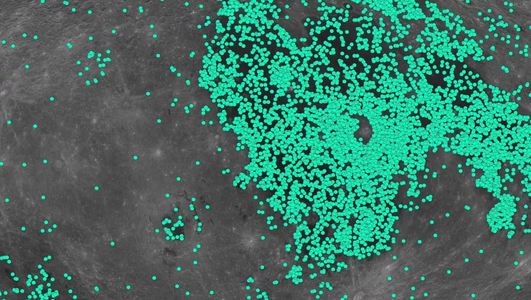There are now over 100,000 craters on Moon, and scientists are intrigued.
The discovery was made in the low- and mid-latitude areas of the Moon. Scientists used AI that was given data gathered by Chinese lunar orbiters.
Here is what you need to know.
Moon’s Craters: a Curiosity
The recent record of Moon’s craters is over a dozen times bigger than previously thought. According to scientists, this amount represents the most significant lunar crater database with applied automatic extraction for the mid- and low-latitude areas of a planet.
Impact craters
Moon’s surface is covered by impact craters, also known as “fossils.” They were formed during some of the most violent meteor strikes and can record the Solar System’s history.
These fossils, however, vary in shape and size, and they can highly erode in time. So, to spot them is exceptionally challenging. Also, the process is time-consuming, leaving scientists’ research puzzled and inconsistent.
New craters
The recent discovery made by Prof. Chen Yang’s team is indeed a great success. They used a deep neural network of previous data and enabled the algorithm to search for new ones.
Furthermore, that network was used on data gathered by the well-known Chang’e-1 and its successor, the Chang’e-2 lunar orbiter. The result includes 109,956 craters on the Moon.
The new craters are classified as small to medium, ranging from 0.6 miles to 60 miles in diameter.
The team’s algorithm also measured when the first 15,000 craters appeared, solely based on their depth and size. Every crater was also assigned to a geological timescale.
Other Significant Details
Prof. Yang aims to improve the crater-discovering algorithm by giving it more data from the recently sent Chang’e 5 lander.Â
The team also plans to readjust and utilise their machine-learning method to other cosmic bodies in the Solar System. More discoveries will be soon ready to take the scientific world by storm.











Leave a Reply